

Ireland, a land woven with myth, history, and the lush tapestry of rolling hills and rugged coastlines, is home to some of the most magnificent castles in the world. These castles are not just stone and mortar; they are the keepers of Ireland’s soul, standing as silent witnesses to centuries of conquests, rebellions, and the ebb and flow of power. The significance of these castles extends beyond their historical and architectural grandeur; they are integral to understanding the cultural and social landscape of Ireland. Each castle has its own unique story, a narrative that is deeply entwined with the nation’s identity. From the imposing towers that guard the countryside to the ruins that whisper tales of bygone eras, Ireland’s castles are a testament to the resilience and enduring spirit of its people.
The diversity of castles in Ireland is a reflection of the country’s tumultuous history, marked by invasions, battles, and the rise and fall of dynasties. These structures range from medieval fortresses built for defense to opulent palaces that served as residences for royalty and nobility. Architecturally, they showcase a range of styles, from the early motte-and-bailey constructions to the formidable stone fortresses of the Norman period, and later, the elegant country houses of the Renaissance. This architectural evolution mirrors the changing political and social landscapes of Ireland through the centuries.
Today, Ireland’s castles are more than historical relics; they are vibrant centers of tourism and cultural heritage preservation. They attract millions of visitors from around the globe, drawn by the allure of exploring ancient halls, climbing tower battlements, and uncovering the mysteries hidden within these stone walls. The castles also play a pivotal role in Ireland’s economy, contributing significantly to the tourism industry while fostering a deeper appreciation for the country’s heritage. As we delve into the history and architectural marvels of these castles, we embark on a journey through time, exploring the very essence of Ireland’s enchanting legacy.
Historical Background of Castles in the Region
The story of castles in Ireland begins with the Norman invasion in the late 12th century, a pivotal event that introduced the concept of feudalism and the first wave of castle-building to the island. These early castles, primarily motte-and-bailey structures, were built for military purposes, serving as fortified bases for the Norman conquerors. The motte-and-bailey castles, with their wooden keeps on raised earth mounds and surrounding enclosures, were quickly erected across the landscape to establish control over conquered territories.
As the Normans consolidated their hold, the wooden fortifications gave way to more durable stone castles. These formidable structures were not only stronger but also symbolized the permanence of Norman rule. The castles evolved to serve multiple functions: they were military strongholds, centers of administration, and symbols of lordly power. Notable examples from this period include Dublin Castle, which became the seat of English administration in Ireland, and Trim Castle, one of the largest Norman castles in Europe.
The Middle Ages saw the castles becoming integral to the social and political fabric of Ireland. They were the residences of the Anglo-Norman nobility, who ruled large swathes of the island. The castles also played a crucial role during the numerous conflicts that marked this era, including the Gaelic resurgence, which saw native Irish chieftains reclaiming territories and constructing their own fortresses.
The 16th and 17th centuries brought significant changes to castle architecture in Ireland, influenced by the Renaissance. Fortifications became less critical due to advancements in military technology and the changing nature of warfare. This era saw the transformation of many medieval castles into lavish country houses, embodying the Renaissance ideals of beauty, symmetry, and proportion. However, the period was also marked by turmoil, including the Cromwellian conquest, which led to the destruction and abandonment of many castles.
Through the centuries, Ireland’s castles have faced decay, destruction, and neglect. Yet, they have endured, preserved by efforts to restore and maintain them as historical and cultural monuments. These efforts have ensured that the castles continue to be a vibrant part of Ireland’s heritage, attracting scholars, history enthusiasts, and tourists alike.
In the next section, we will explore some of the major castles in Ireland, delving into their histories, architectural highlights, and the visitor experiences they offer.
Major Castles in the Region
Ashford Castle
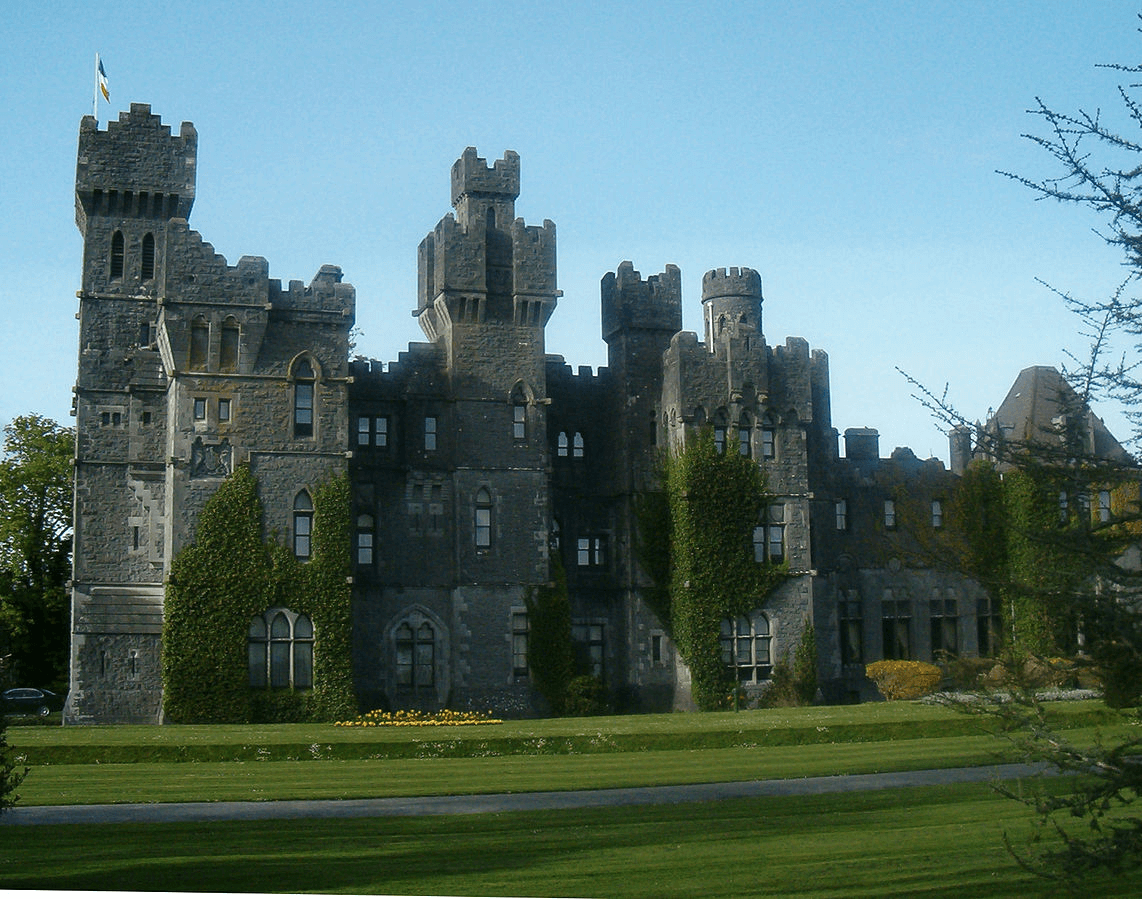
Brief History: Ashford Castle’s story begins in 1228, founded by the Anglo-Norman de Burgo family following their conquest of the region. It underwent expansions in the late 1500s under the English House of Boleyn. Transformed over centuries, it served as a medieval stronghold, a viceregal lodge, and eventually, a luxury hotel. Its rich history mirrors the tumultuous shifts of Irish power dynamics, from Norman invasions to the era of the Irish estates.
Architectural Highlights: This castle showcases a mix of architectural styles, from the original Norman fortress to Victorian and Neo-Gothic additions. The sprawling estate features meticulously landscaped gardens, a striking facade with towering turrets, and lavishly decorated interiors that include a grand dining hall, opulent rooms, and state-of-the-art amenities, blending historic elegance with modern luxury.
Visitor Information: Ashford Castle is now a five-star luxury hotel, offering guests the chance to experience its historic grandeur firsthand. Visitors can enjoy guided tours of the castle and grounds, indulge in activities like falconry, fishing, and golf, or relax in its world-class spa. Tours are available to non-resident guests by prior arrangement, allowing them to explore the castle’s public areas and gardens.
Dublin Castle
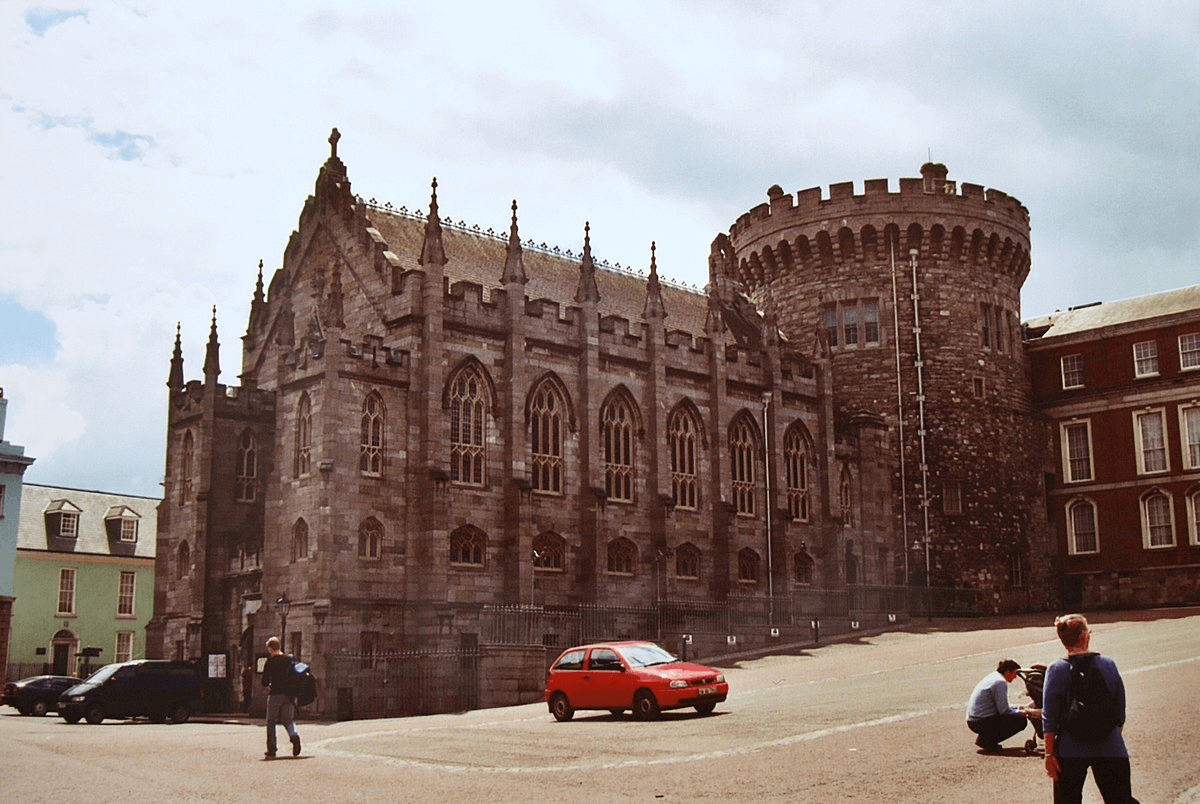
Brief History: Dublin Castle, established in 1204 on the order of King John of England, served as the administrative heart of English, and later British, rule in Ireland for centuries. Initially constructed as a defensive fortification, it evolved into a symbol of English authority, hosting viceroys and colonial administrators until Ireland’s independence in 1922.
Architectural Highlights: The castle complex features a mix of architectural styles, reflecting its continuous use and renovations over 800 years. Noteworthy are the medieval Record Tower, the neoclassical Chapel Royal, and the Victorian-era State Apartments. The interiors boast opulent furnishings, intricate stucco work, and historical artifacts, offering a glimpse into the lives of its past occupants.
Visitor Information: Dublin Castle is open to the public, offering guided tours that encompass the State Apartments, Chapel Royal, Undercroft, and the beautifully maintained castle gardens. It also hosts art exhibitions, concerts, and conferences, making it a vibrant cultural hub in the heart of Dublin.
Kylemore Abbey
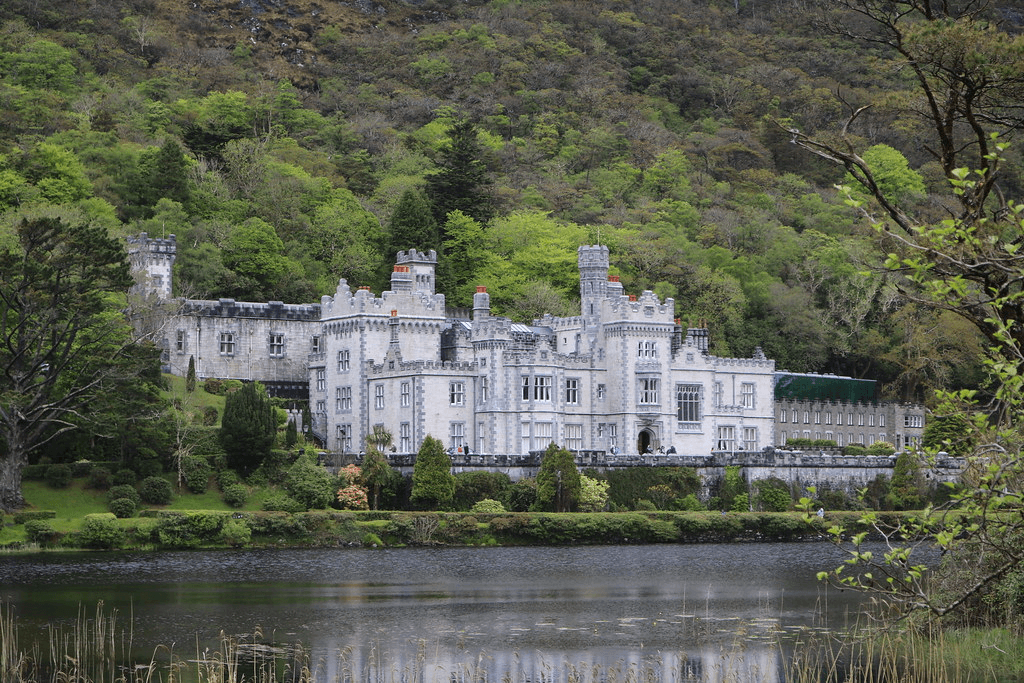
Brief History: Kylemore Abbey, nestled in the Connemara countryside, was originally built as a private home in 1868 by Mitchell Henry, a wealthy doctor and politician, for his wife Margaret. Following Margaret’s death, the estate changed hands until it was purchased by the Benedictine nuns in 1920, who fled Belgium during World War I. The nuns established a monastery and a girls’ school, which operated until 2010.
Architectural Highlights: This Victorian-era castle is renowned for its romantic Gothic Revival architecture, set against the backdrop of the Connemara mountains and lakes. The estate includes a neo-Gothic church, walled Victorian gardens, and the abbey itself, with its ornate interiors and tranquil setting offering a peaceful retreat.
Visitor Information: Kylemore Abbey is open to visitors, who can explore the abbey, the Gothic Church, and the Victorian Walled Garden. The estate also features a café, a craft shop, and various walking trails, providing a serene experience amidst the natural beauty of Connemara.
Blarney Castle
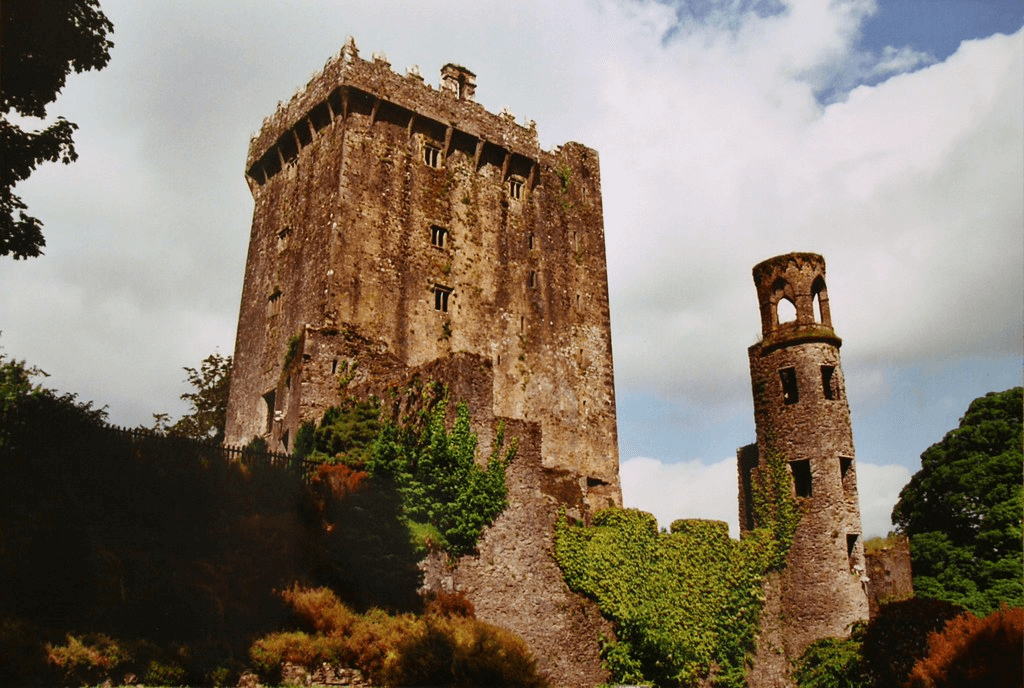
Brief History: Blarney Castle, famous for the Blarney Stone, was built nearly six centuries ago by Cormac MacCarthy, one of Ireland’s greatest chieftains. The castle has been a strategic fortress since its inception, known for its legendary stone, which is said to bestow the gift of eloquence on those who kiss it.
Architectural Highlights: The current structure is the third to have been erected on this site, showcasing the remains of a grand medieval fortress. Visitors are drawn to the Blarney Stone, but the castle’s towers, battlements, and lush gardens, including the poisonous garden, offer much more to explore.
Visitor Information: Blarney Castle is open year-round, with extended hours during the summer months. Visitors can explore the castle, kiss the Blarney Stone, and wander through its extensive gardens, which include mystical rock formations, water features, and a diverse range of plant species.
Rock of Cashel

Brief History: The Rock of Cashel, also known as St. Patrick’s Rock, is a historic site located in County Tipperary. It’s a collection of medieval ecclesiastical buildings set on an outcrop of limestone, with origins dating back to the 4th century. The site was once the traditional seat of the kings of Munster, and according to legend, it was visited by St. Patrick himself in the 5th century. The Rock became a major Christian center, with the most notable buildings erected between the 12th and 13th centuries.
Architectural Highlights: The Rock of Cashel encompasses a round tower, a High Cross, the Romanesque Cormac’s Chapel, the Gothic cathedral, and the 15th-century Castle. The site offers stunning examples of medieval architecture and art, including one of the best-preserved Romanesque frescoes in Ireland found within Cormac’s Chapel.
Visitor Information: The Rock of Cashel is open to the public, offering self-guided and guided tours that cover the history and significance of the site. Visitors can explore the ancient buildings, enjoy panoramic views of the Tipperary countryside, and learn about the rich history of this important ecclesiastical site.
Dromoland Castle
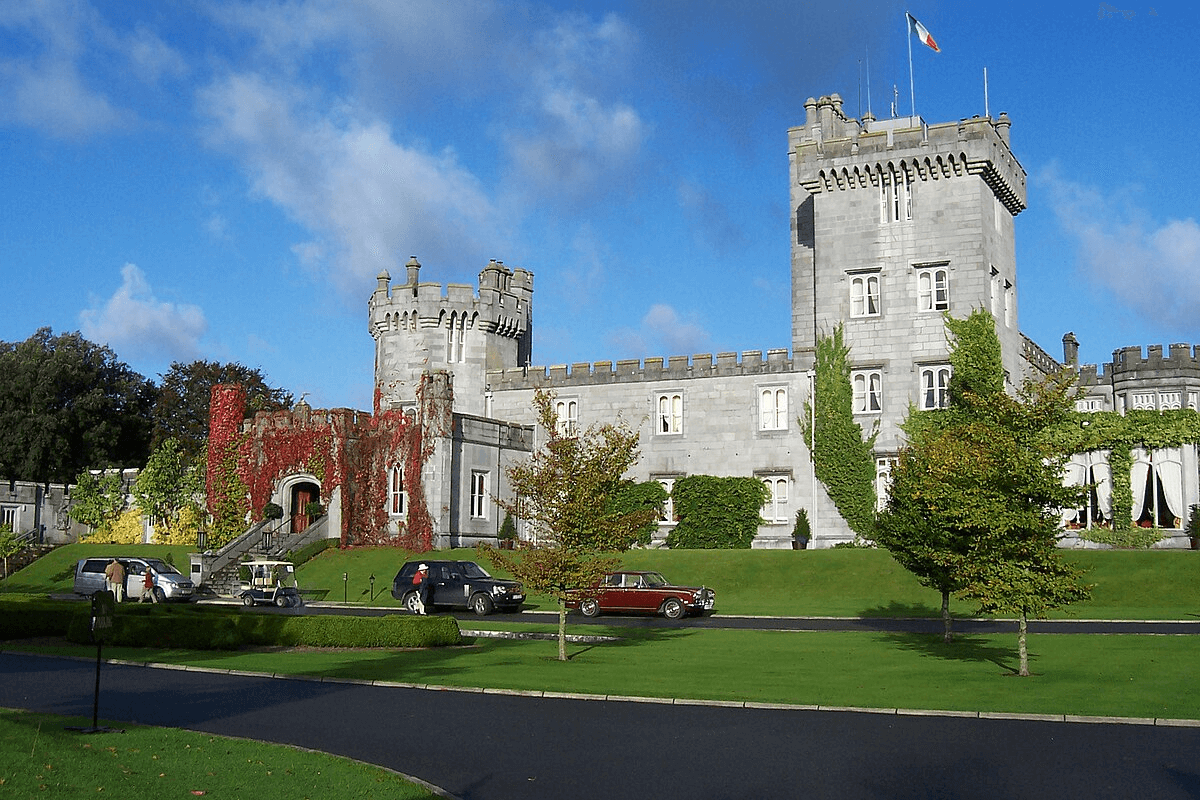
Bunratty Castle
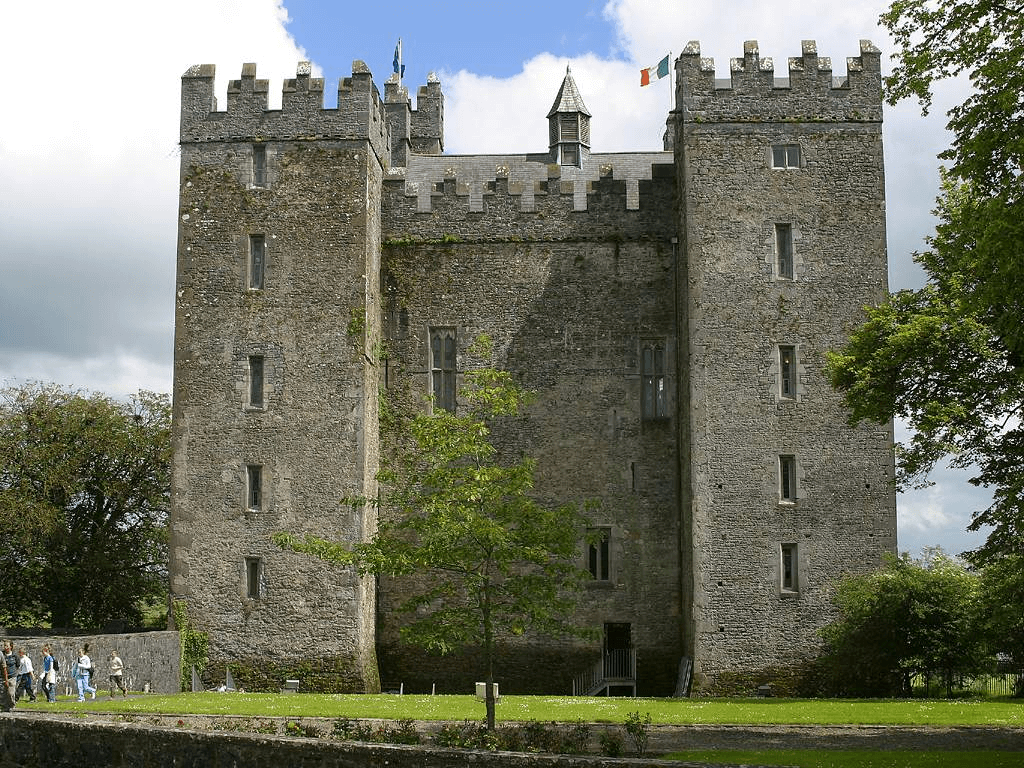
Brief History: Bunratty Castle, located in County Clare, is one of the most complete and authentic medieval fortresses in Ireland. The current structure, the fourth castle to be built on this site, was constructed in the 15th century by the MacNamara family and later passed to the O’Briens, who were the Earls of Thomond. The castle was restored in the 20th century to its former medieval splendor and now features furnishings and tapestries from that period.
Architectural Highlights: Bunratty Castle is known for its impressive Great Hall, its tower houses, and its defensive features, including a drawbridge and battlements. The castle is surrounded by a folk park, which recreates rural and urban life in 19th-century Ireland, complete with cottages, a village street, and a walled garden.
Visitor Information: Bunratty Castle and Folk Park offer a comprehensive experience, with guided tours of the castle available, as well as the opportunity to explore the folk park at leisure. The castle also hosts medieval banquets, offering a taste of 15th-century dining and entertainment.
Dunluce Castle
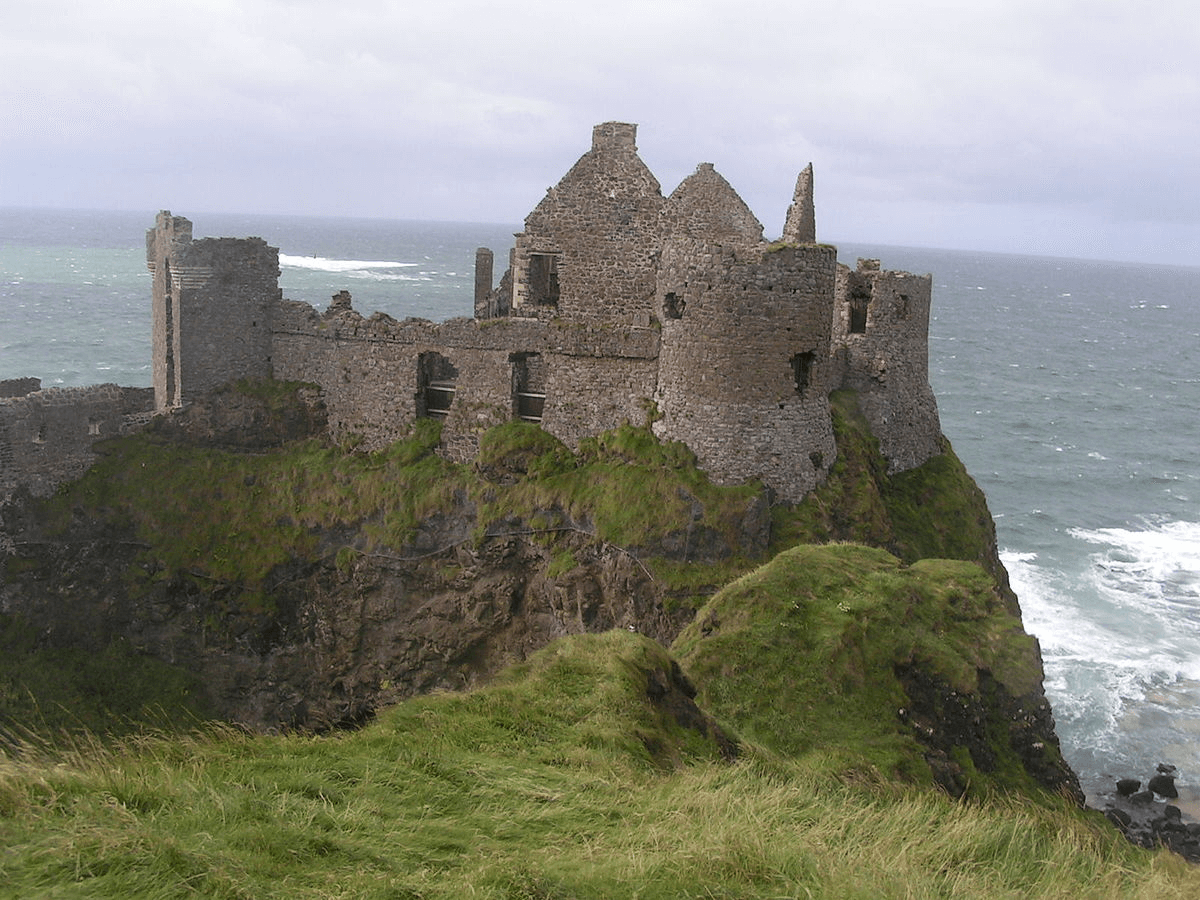
Brief History: Perched on the dramatic coastal cliffs of County Antrim, Dunluce Castle is a ruined medieval castle, whose history dates back to the 13th century. It was the seat of the Clan McDonnell and is famed for its role in various historical conflicts and its picturesque setting, which has made it a popular location for film and photography.
Architectural Highlights: Dunluce Castle is celebrated for its location, offering stunning views of the North Atlantic and the Causeway coast. The castle ruins include the residential buildings that teeter on the cliff edge, a medieval church, and the iconic arched gateway that leads to the mainland.
Visitor Information: Visitors to Dunluce Castle can explore the ruins, learn about the site’s history through onsite information panels and a visitor center that houses exhibits on the castle’s archaeological finds. The dramatic scenery and historical ambiance make it a must-visit for anyone touring Northern Ireland.
Malahide Castle
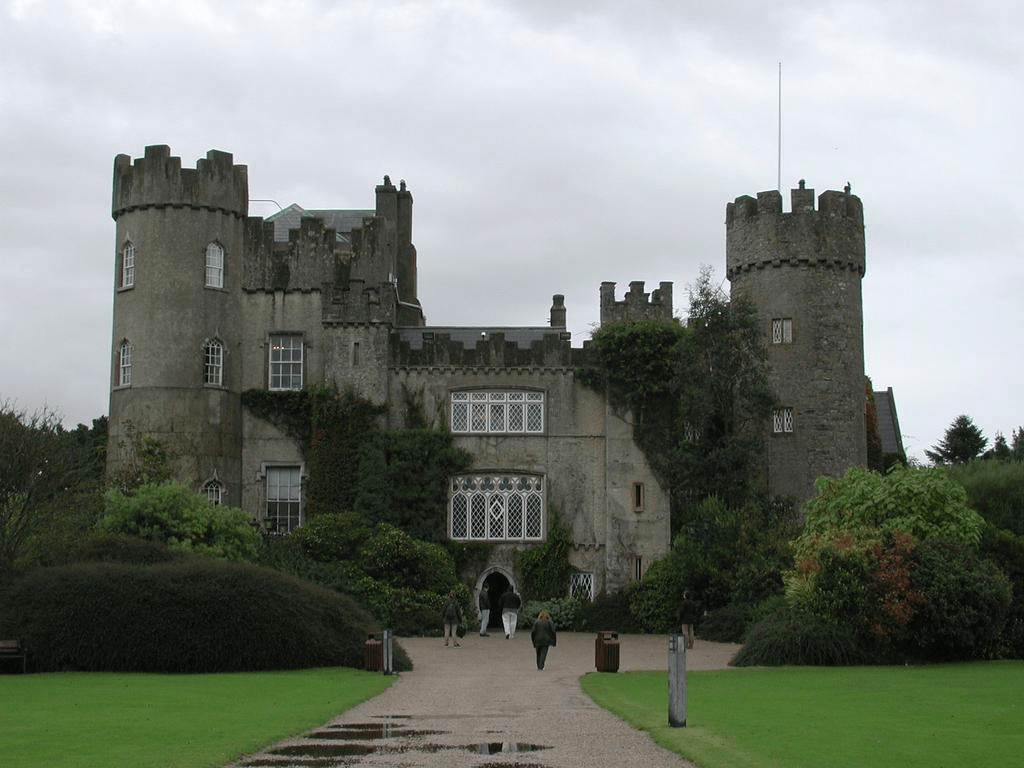
Brief History: Malahide Castle, set on 260 acres of parkland in the picturesque seaside town of Malahide, was founded in the 12th century by Richard Talbot, a knight who accompanied Henry II to Ireland. The castle was home to the Talbot family for almost 800 years, with the exception of a brief period under Cromwellian rule. It is a mix of architectural styles, reflecting modifications made over the centuries.
Architectural Highlights: The castle features a blend of medieval and Georgian architecture, with ornate reception rooms, a magnificent Great Hall, and a collection of portraits from the National Gallery of Ireland. The surrounding gardens, known as the Talbot Botanic Gardens, are renowned for their collection of rare plant species and Victorian conservatory.
Visitor Information: Malahide Castle and Gardens are open to visitors, offering guided tours that highlight the castle’s history, its family legacy, and its architectural evolution. The estate also includes a playground, a café, and several specialty shops, making it an ideal destination for families.
Castle Leslie
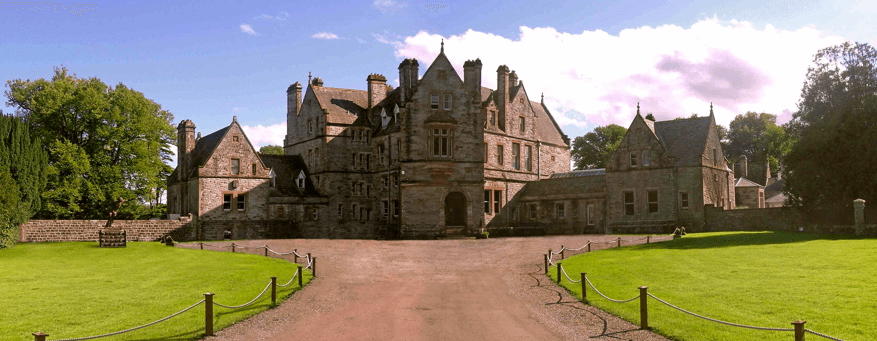
Brief History: Castle Leslie, located in County Monaghan, has been the seat of the Leslie family since the 17th century. Unlike many Irish castles, it has avoided becoming a hotel and remains a family home, though it does offer guest accommodations and event hosting. The estate has a rich history, with connections to Irish literature and politics, and has welcomed many distinguished guests over the years.
Architectural Highlights: The castle is renowned for its authentic and eclectic interior, which has remained largely unchanged since the 19th century. It features original furnishings, decorative arts, and a unique ambiance that reflects the family’s history and eccentric character.
Visitor Information: Castle Leslie offers a range of accommodation options, from castle bedrooms to lodge rooms and cottages on the estate. Guests can enjoy a variety of activities, including horseback riding, fishing, and spa treatments. Guided tours of the estate are also available, providing insights into the Leslie family’s history and the castle’s heritage.
Conservation and Tourism
The conservation of Ireland’s castles is a critical aspect of preserving the nation’s rich historical and cultural heritage. These ancient structures are not only architectural marvels but also serve as tangible connections to Ireland’s past, telling stories of feudal lords, clan battles, and the shifting sands of power and politics through the centuries. However, maintaining these historic properties presents significant challenges, including the need for specialized restoration skills, the high cost of conservation work, and the impact of environmental factors.
Efforts to conserve Ireland’s castles are multifaceted, involving government agencies, heritage organizations, and private owners. These efforts often focus on structural stabilization, restoration of architectural features, and the installation of interpretive displays to educate visitors about the castle’s history and significance. Funding for conservation comes from various sources, including government grants, private donations, and revenue generated from tourism.
Tourism plays a vital role in the conservation of Ireland’s castles. The income generated from castle visits, including entry fees, guided tours, and special events, provides a crucial financial stream for ongoing maintenance and conservation projects. Moreover, tourism fosters a broader appreciation and understanding of these historical sites, encouraging support for their preservation.
The balance between conservation and tourism is delicate. While tourism revenues are essential for the upkeep of these castles, excessive foot traffic and the wear and tear from visitors can pose risks to the structures and their artifacts. Managing this balance involves implementing visitor management strategies, such as limiting numbers, creating designated pathways, and providing comprehensive information to educate visitors on the importance of preserving these sites.
Visiting the Castles: Tips and Recommendations
Planning a visit to Ireland’s castles can be an exciting yet daunting task, given the wealth of options and the logistical considerations involved. Here are some tips and recommendations to ensure a memorable and smooth experience:
- Best Times to Visit: The summer months (June to August) offer the best weather, but they also coincide with peak tourist season. For a less crowded experience, consider visiting in the shoulder seasons of spring (April to May) or autumn (September to October).
- Guided Tours: Many castles offer guided tours, which can provide deeper insights into the history and architecture of the sites. Booking in advance is recommended, especially during peak season.
- Special Events: Some castles host special events, such as medieval banquets, jousting tournaments, and cultural festivals. Check the castles’ official websites or contact them directly for event schedules and ticket information.
- Practical Tips: Wear comfortable walking shoes, as exploring castles often involves a lot of walking, sometimes on uneven surfaces. Also, be prepared for Ireland’s unpredictable weather by bringing rain gear.
- Stay Nearby: To fully immerse yourself in the experience, consider staying in or near a castle. Several castles offer accommodation, ranging from luxurious hotel rooms to cozy cottages.
Conclusion
Ireland’s castles are not merely stones and mortar; they are storied sentinels of the past, offering a glimpse into the country’s tumultuous history, rich culture, and architectural ingenuity. As visitors explore these ancient halls and towers, they walk in the footsteps of kings, queens, and warriors, connecting with the soul of Ireland itself. Supporting the preservation of these treasures through responsible tourism ensures that they will continue to enchant and educate future generations. Ireland’s castles beckon, offering adventures, stories, and memories that will last a lifetime.

